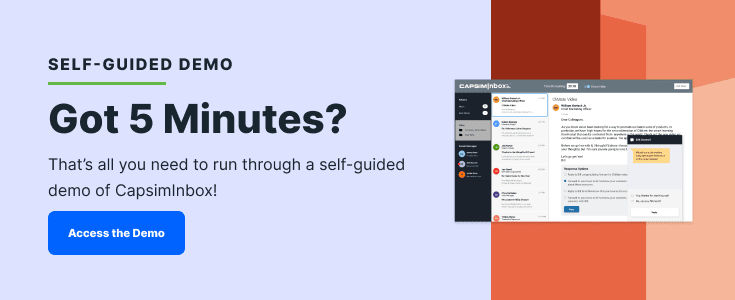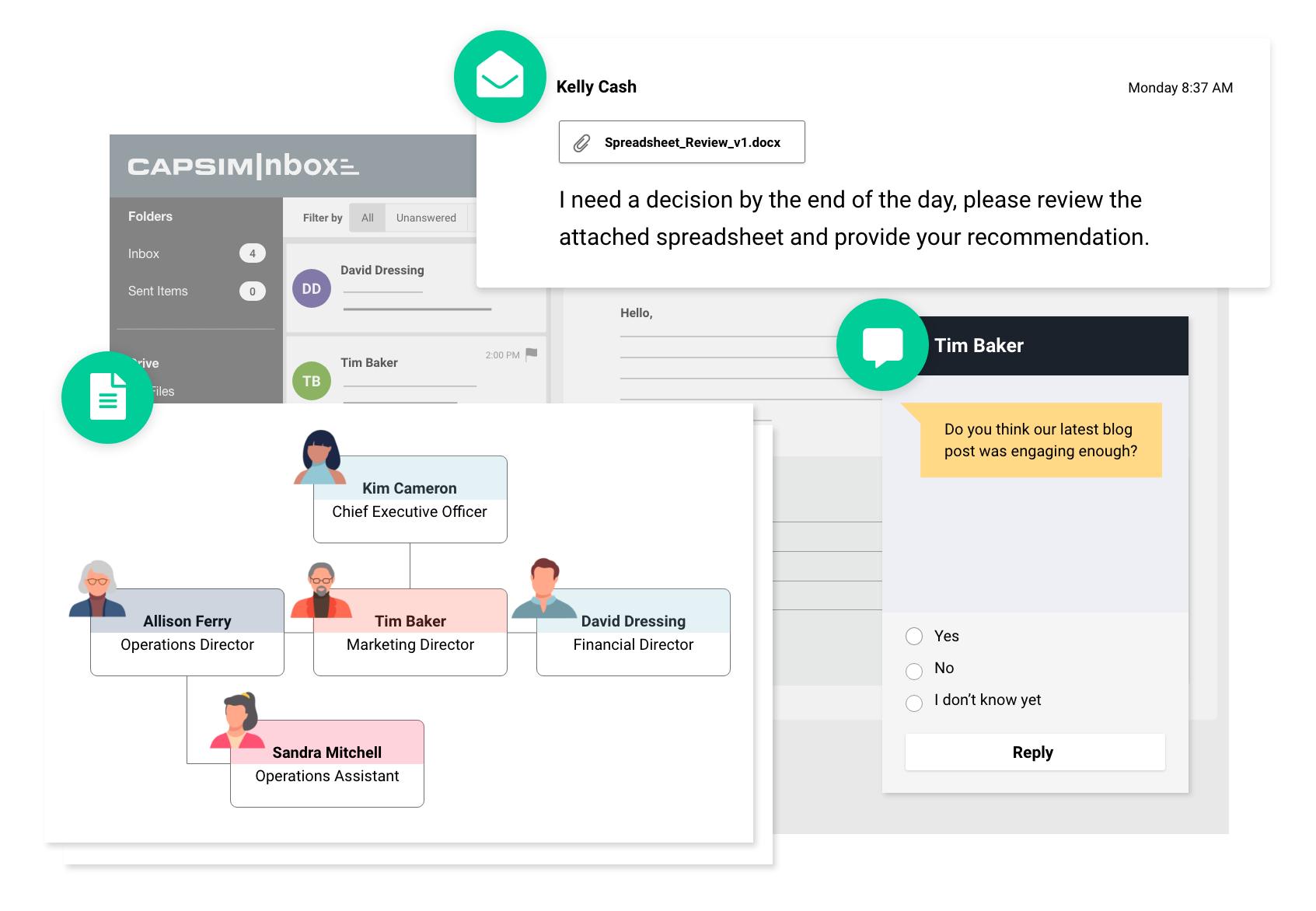How to Upskill Your Workforce in 2022: A Step-by-Step Approach
March 10, 2022
.jpg)
Technology comes and goes, and apparently, so do critical job skills. A 2021 report from Gartner found that 58 percent of the workforce will need new skills to do their current jobs successfully.
Furthermore, Gartner’s research found that 33 percent of skills in a typical IT, finance, or sales job posting from 2017 are now obsolete. Driven by advances in technology and further spurred on by hiring freezes and business model changes from the pandemic, many companies now find themselves needing to cover and identify skill gaps with their current workforce. The spotlight is squarely on learning and development to upskill employees and help them grow.
In this follow-up to our post “How to Build Your Own Upskilling Training Program,” we’ll get more granular in the “how-to” of upskilling your workforce.
How to Upskill Your Workforce in a Repeatable 6-Step Process
Upskilling is essential in the modern business world. Change is the only constant when it comes to business processes, technologies, and organizational goals. To remain competitive in a fast-paced marketplace, your company—and your workforce—needs to be equipped to adapt to rapid change.
Our post, “How to Build Your Own Upskilling Training Program,” laid the foundation for starting an upskilling initiative in your organization. We covered the importance of conducting a skills gap analysis, aligning on organizational goals, and determining success metrics for your program. This article aims to dive deeper into the actual upskilling process.
Using this six-step approach, you’ll have all the tools you need to devise and roll out an effective upskilling program at your organization.
Step 1. Get Your Overall Upskilling Infrastructure in Place
As we laid out in our first upskilling training program article, you first need to have the proper infrastructure in place before you can begin upskilling your workforce.
Much like building a house, it's unwise to try to move forward with a training program without building the proper foundation upskilling. The steps you need to take before devising your training program are as follows:
- Understand the Direction Your Company is Heading
Discuss large-scale organizational goals with important stakeholders in your organization. Your upskilling efforts should be designed with the end goal of helping your workforce’s skill set align with your company’s long-term goals. - Determine the Required Personnel and Skills Needed
With an understanding of your organization’s goals in hand, your next step is to determine what skills and human capital your company will need to meet those goals. - Identify Current Employees Skill Levels and Skill Gaps
Conduct a skills gap analysis to determine which key skills outlined in the above stage are missing from your workforce. You will also use the skills gap analysis data as baseline information for each employee, enabling you to create individualized development plans. - Determine the Success Metrics and KPIs for Your Upskilling Program
How will your organization’s leadership know if your upskilling program was a success? Set up the metrics you plan to track before beginning, enabling you to make your upskilling approach more targeted.
Once you have these items complete, you’re ready to get into the nitty-gritty details of upskilling your workforce.
Step 2. Identify the Upskilling Tools and Methods You’ll Use
After you’ve laid the foundation for your program, the next step is to determine the training methods and tools you’ll use for your upskilling efforts.
Like most L&D initiatives, you will want to use a combination of tools and methods. Using multiple approaches helps you present topics from multiple perspectives and enables you to reach employees with different learning styles in different ways.
Related Read: On-the-Job Training Methods vs. Simulations: Which is More Effective?
You’ll also want to use different approaches for different stages of the learning process. To achieve maximum transfer of training and create learning that sticks, you will need to use a combination of knowledge acquisition and knowledge application.
Helpful methods for knowledge acquisition include:
- Seminars
- PowerPoint presentations
- Video content
For knowledge application, you’ll want to use:
- Ready-to-use simulations
- Custom simulations
- Inbox simulations
- Microsimulations
- On-the-job training
The advantage simulations like CapsimInbox have over on-the-job training is scalability. On-the-job training and job shadowing can be effective on a small scale, but they become inefficient, time-draining, and inconsistent on a larger scale.
When you’re using simulation training, you allow your trainees to test out their newly acquired skills in a controlled, real-world environment. Additionally, you gain reportable data and valuable performance insights on the back end.
Step 3. Meet with Employees to Identify their Goals
With all the logistics sorted out, it’s time to begin implementing your training program. But hold on: It’s not time to schedule seminars and build PowerPoints just yet.
Before you begin the training piece of your upskilling efforts, you need to meet with the affected employees. Meet one-on-one with all employees participating in the program. Take this opportunity to create self-awareness in each employee by sharing their skills gap assessment results. Discuss their weaknesses in technical and soft skills in the workplace in a collaborative, solution-minded manner.
Involving the employees early in the process helps to ensure they buy into the training initiative. This buy-in has multiple benefits:
- Invested employees will be more engaged in training sessions.
- Ground-level employees may share insights you hadn’t thought of when they feel supported and encouraged to do so.
You will also want to have a frank and transparent discussion regarding the upskilling plan with each employee. Determine their future career goals and help them see how the upskilling you’re providing can help them reach those goals.
If you notice stand-out, high-potential employees during this process, you may want to work with those individuals to create personalized development plans.
Step 4. Determine Upskilling Priorities
Chances are, the first few stages of your upskilling process revealed several opportunities for upskilling in your organization. Step four of upskilling your workforce is prioritizing those opportunities.
Which upskilling opportunities are the most urgent?
As much as you may want to help every role and employee at once, that may not be possible. The best course of action is to slow down and consider which employees would benefit the organization most after upskilling?
Split your list of employees who need upskilling into tiers and complete your upskilling efforts in phases. Unsure of which roles and workers you should upskill in phase one? Here are some ways to decide:
- Critical need: Has a knowledge leader left the organization, leaving a talent gap in a critical capacity?
- New technology: Have you implemented a new tool with crucial functionality that workers need to learn to use?
- Imminent promotions: Are team members getting promoted to leadership positions in the next few weeks or months?
Employees who don’t fall into these categories can likely wait for a later phase of your upskilling program.
To speed up the process and go through phases more quickly, you may want to consider using business simulation training in your efforts. Simulations are easier to scale, so you can have more phases of trainees up and running simultaneously without overwhelming your L&D team.
Step 5. Create Upskilling Plans for Target Employees
After you’ve established your phases, you’re ready to create upskilling plans for each phase of trainees. Your upskilling program should have a consistent cadence that incorporates different types of training, like classroom sessions, lunch-and-learns, one-on-one meetings with mentors, and simulations.
A few often-forgotten elements you’ll want to include in your upskilling plans are:
- Debriefing: After a training session, ensure that you are taking the time to debrief your trainees. Use your debriefing session to reinforce key messages and provide employees with actionable steps to apply the material learned during their daily work.
Related Read: Debriefing in Simulation-Based Learning is Critical. Here's Why.
- Learner Feedback: Ensure that you’re asking for learner feedback throughout your upskilling program. The feedback you receive from trainees can help you improve your upskilling efforts, making the training more effective with each phase or initiative.
- Check-Ins: Check in with learners regularly (ex. monthly, quarterly, or weekly). Use these meetings as opportunities to establish the trainee's progress and have an open discussion about their experience in the upskilling program.
Lastly, you’ll want to ensure you’re providing employees with a resource where they can easily access their training schedule, materials, goals, and progress. You can provide employees with access to this information through a physical binder or a digital dashboard.
Example:
You are focusing on upskilling the soft skill of written communication. You may start with a one-hour classroom session outlining the best way to send a professional and effective email. Immediately following the classroom session, you provide your trainees with a simulation to help them apply the lessons they have just learned in a controlled, real-world email setting.
A few days later, you’ll schedule a follow-up micro-learning simulation, enabling your trainees to test their skills again and allowing you to see how much knowledge they have retained. You follow the microsimulation with a debriefing session, explaining the key points from your email training session and asking for learner feedback.
Step 6. Rinse and Repeat for All Employees Requiring Upskilling
Lastly, you’ll want to repeat the steps you’ve taken with your Phase-One upskilling candidates and repeat those efforts for all the employees in the later phases of your program. Continue to prioritize your training efforts and phases based on business needs and organizational goals.
An important note for this step: Don’t be afraid to shift your strategy.
If the groundwork you laid in the early steps of the process was solid, you might not need to make many changes, but you will still learn new things as you proceed through the upskilling project.
Modify training efforts, seminars, or timelines as you go to ensure your learners are getting the best experience possible.
Then, once you’ve finished training all the employees involved in this initiative, you can head back to Step One and begin preparing your next upskilling program.
You Have the Steps, Now Get to Work on Upskilling Your Workforce
You know how beneficial upskilling will be for your organization, so you’re likely itching to get started. One of the fastest ways to get your upskilling program rolling is incorporating ready-to-use inbox simulations from Capsim.
CapsimInbox’s ready-to-use simulations are pre-built by experienced professionals and validated for their ability to engage and enrich learners of all levels and skillsets.
The story-driven nature of a simulation pulls learners in, and the fact that the simulation mirrors their real-world work experience helps them remain engaged.
You can also use microsimulations, supplying workers with modular, targeted training they can complete in thirty minutes or less. These shorter sessions help employees remain engaged and are less disruptive to the normal workday.
To see for yourself how CapsimInbox can help you launch an incredible upskilling program, take one of our self-guided demos today!





.png?width=80&name=1-questions%20(1).png)